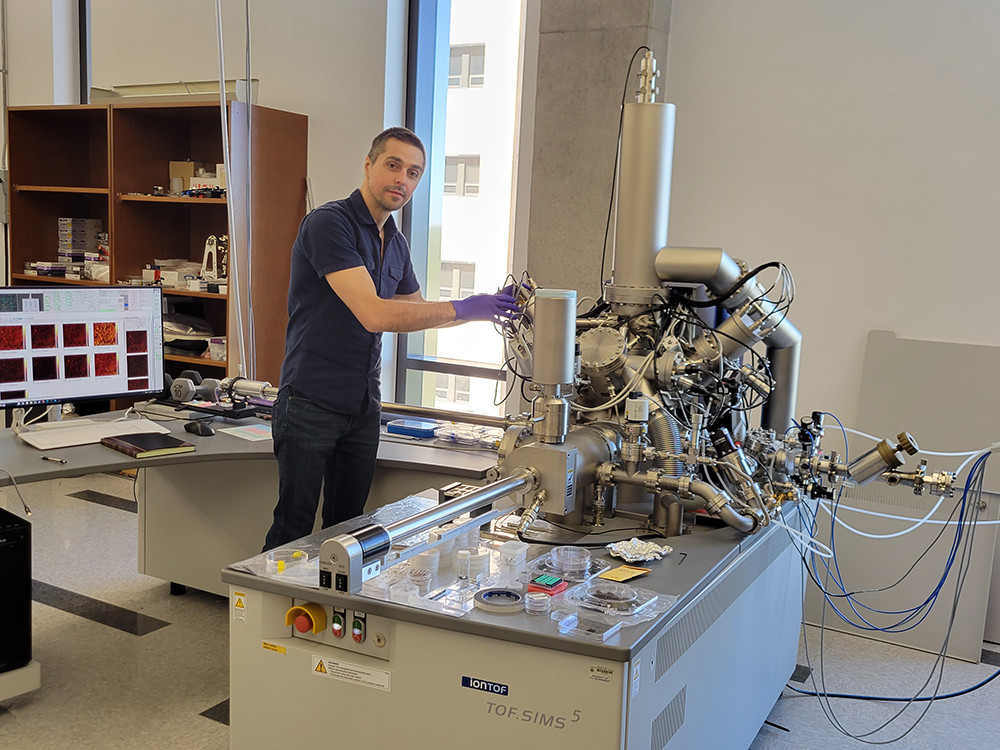
Figure 1. Dr. Andrei Dolocan and the TOF-SIMS instrument at TMI.
The exploration of our Solar System and beyond for celestial bodies (asteroids) that could endanger life on Earth has recently found a renewed interest among astro scientists.
To date, using a wide range of telescopes scientists have discovered over 1 million asteroids in our Solar System, some of them, with diameters larger than 1 km, having the potential to end life on Earth. These asteroids have an ample size distribution and are composed of rocks, metal or ice, while holding no atmosphere. Their classification is related to their general composition: carbonaceous (C-type), metallic (M-type), and silicaceous (S-type). Knowing the composition and structure of these asteroids, especially the massive ones, is critical to developing a planetary defense strategy.
Aiming to clarify the origin and evolution of the Solar System, including the beginnings of life, the Hayabusa2 deep space mission was developed by Japan Aerospace Exploration Agency (JAXA) in collaboration with NASA and other Space Agencies around the world. The main purpose of this mission is to send a space probe to two asteroids, touch down and collect samples from their surface, and return the specimens to Earth for extensive analysis. Launched in December 2014, the Hayabusa2 mission has been, so far, very successful. The space probe was able to touch down twice (in 2018 and 2019) on the surface of a class C asteroid (Ryugu) and collect invaluable specimens that were returned to Earth in 2020 during a flyby. Currently, the Hayabusa2 probe is on route to a fast-rotating asteroid, 1998 KY26, that will be reached in 2031, besides a flyby around another asteroid, 2001 CC21, scheduled for 2026.
Another very important goal of the Hayabusa2 mission is to attempt a close proximity flyby of asteroid 2001 CC21 without collision to verify the navigation technologies that could be used to modify the trajectories of potentially dangerous asteroids by direct collision, a very important step in developing a planetary defense strategy. Consequently, the ability to measure the physical characteristics of these asteroids and establish operation methods in their vicinity will deepen the knowledge about these asteroid classes and provide us with useful information for designing countermeasures against an Earth collision.
During the touch down on the surface of the asteroid Ryugu, 17 grains of material were collected and returned to Earth for extensive analysis. TMI scientists, Dr. Andrei Dolocan and Dr. Raluca Gearba, have joined the Hayabusa2 STONE Team in analyzing one of the Ryugu grains. Although representing only a small part of the international effort in studying the Ryugu material, the TMI analysis was critical to understanding the material properties of Ryugu, which ultimately led to the discovery of its origin. The TMI team, joined by Dr. Michael Zolensky (NASA) and Dr. Robert Bodnar (Viginia Tech), has used the time of flight secondary ion mass spectrometer (TOF-SIMS) and the focused ion beam (FIB) facilities at TMI to reveal the buried chemical composition of the Ryugu grain.
 Figure 2. Analysis of the Ryugu grain consisting of pyrrhotite (iron sulphide) crystal. A. and B. Slices through the grain crystal with Synchrotron Radiation X-ray Computed Tomography (SR-CT) indicating the location of a buried fluid inclusion. C. TOF-SIMS analysis of the fluid inclusion. D. Energy Dispersive X-Ray Spectroscopy (EDS) analysis of the empty hole left after the TOF-SIMS analysis of the fluid inclusion. Source: Science (Sept. 2022) DOI: 10.1126/science.abn8671
Figure 2. Analysis of the Ryugu grain consisting of pyrrhotite (iron sulphide) crystal. A. and B. Slices through the grain crystal with Synchrotron Radiation X-ray Computed Tomography (SR-CT) indicating the location of a buried fluid inclusion. C. TOF-SIMS analysis of the fluid inclusion. D. Energy Dispersive X-Ray Spectroscopy (EDS) analysis of the empty hole left after the TOF-SIMS analysis of the fluid inclusion. Source: Science (Sept. 2022) DOI: 10.1126/science.abn8671
In particular, Dr. Dolocan (Fig.1) has performed high-resolution depth profiling on the TOF-SIMS to reveal the composition of fluid inclusions trapped inside the Ryugu grain. Due to the volatile nature of the fluid under vacuum environment the grain was kept at cryogenic temperatures (-140 °C) during the data acquisition. The analysis of the trapped fluid inclusions in the hexagonal pyrrhotite (that is, iron sulphide) crystal, which formed most of the grain, by cryo TOF-SIMS revealed that the fluid consisted of water and CO2, as well as sulphur species and organic molecules (Fig.2). The presence of water and CO2 indicates that Ryugu’s parent body formed far away from the Sun, where H2O and CO2 could freeze into solids that could be included in the asteroid. This is a fundamental discovery, quoting Prof. Tomoki Nakamura of Tohoku University, the lead scientist on the publication: “The finding of a tiny amount of water and CO2 in a small crystal by Andrei and his colleagues clearly indicates that Ryugu formed at outer region of solar nebula. It is very important to understand the formation of asteroid Ryugu and its composition”. Importantly, the cryo TOF-SIMS analysis implies that both water and more complex organic material are a regular part of type-C asteroids, which further suggests life on Earth might have an extraterrestrial origin.
The analysis results of the Hayabusa2 STONE Team, including the work performed at TMI, have been recently published in the prestigious journal Science (DOI: 10.1126/science.abn8671).

